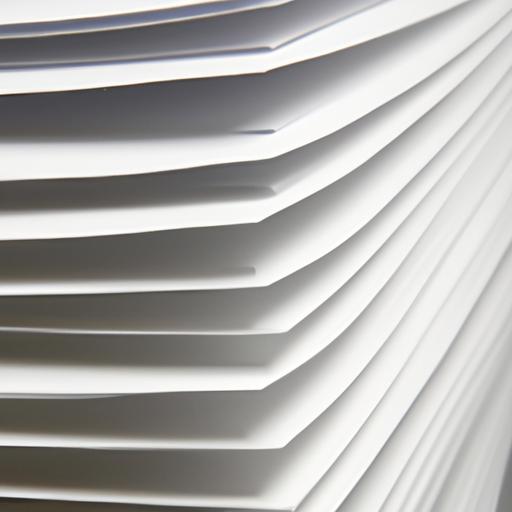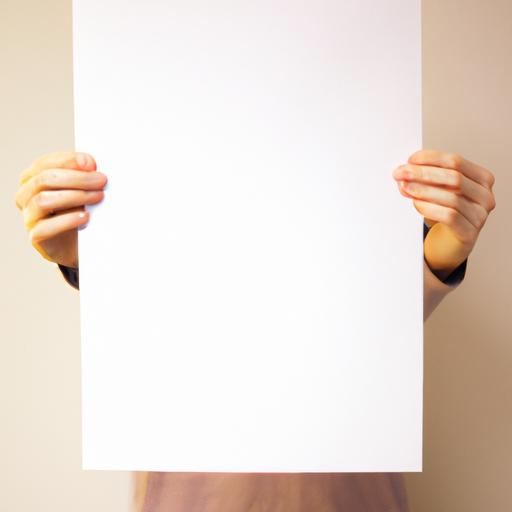What is 11×17 Paper Called? Understanding the Different Names and Uses
Table of Contents
When it comes to paper, size matters. Depending on your needs, it’s important to choose the right size to ensure your project looks professional and polished. One popular size that you may have come across is 11×17 paper, which is commonly used for printing posters, flyers, and other marketing materials. However, what is 11×17 paper called, and how does it compare to other paper sizes? In this article, we’ll explore the different names for 11×17 paper and its common uses.
Standard Paper Sizes

Before we dive into the specifics of 11×17 paper, let’s first take a look at standard paper sizes. Standard paper sizes are used worldwide and are typically categorized as either A-series or B-series. A-series paper sizes are commonly used in Europe and Asia, while B-series paper sizes are used for larger formats such as posters and banners.
One of the most common standard paper sizes is A4, which measures 8.27 x 11.69 inches. This size is commonly used for printing documents, such as letters and resumes. Another popular size is A3, which measures 11.69 x 16.53 inches and is often used for printing larger documents or posters.
In the United States, however, standard paper sizes are typically measured in inches. The most common sizes are 8.5 x 11 inches (letter size) and 11 x 17 inches (tabloid size). While these sizes may not be considered standard on a global scale, they are widely used in the U.S. for printing documents and marketing materials.
Understanding 11×17 Paper
Now that we’ve covered standard paper sizes, let’s take a closer look at 11×17 paper. This size is also known as tabloid size or ledger size, and it measures 11 inches by 17 inches. This size is larger than letter size but smaller than poster size, making it a popular choice for printing marketing materials and other documents that need to stand out.
One of the main advantages of 11×17 paper is its versatility. This size can be folded in half to create a booklet or brochure, or it can be used to print a full-page flyer or poster. Additionally, 11×17 paper is often used for printing architectural and engineering drawings, as well as maps and blueprints.
Despite its versatility, 11×17 paper may not be the best choice for all projects. Because of its larger size, it may be more expensive to print on 11×17 paper than on smaller sizes. Additionally, if you’re printing a document that will be bound or stapled, it may be difficult to fold or fit on a standard-sized sheet of paper.
Different Names for 11×17 Paper
While 11×17 paper is commonly referred to as tabloid size or ledger size, it has several other names depending on the industry or region. In the printing industry, 11×17 paper may be referred to as B size, which is part of the B-series paper sizes. Additionally, it may be referred to as ANSI B size or ANSI B paper, which is a standard size used for architectural and engineering drawings.
In the United Kingdom, 11×17 paper is known as A3+, which is slightly larger than the A3 size commonly used in Europe. In Australia and New Zealand, it may be referred to as A3 oversize or B+ size.
Regardless of its name, 11×17 paper is a popular choice for printing marketing materials and other documents that need to stand out. By understanding the different names and common uses for this size, you can determine if it’s the right choice for your next project.
When it comes to choosing the right paper for your project, there are several factors to consider. From paper weight to finish and color, each element can impact the final result of your printed piece. In this section, we’ll explore the different factors to consider when choosing paper and how they can affect your project.
Paper Weight
Paper weight refers to the thickness of the paper and is typically measured in pounds or grams per square meter (GSM). The weight of the paper can affect how it feels, how it folds, and how it holds up over time. For example, a heavier weight paper may be more durable and less likely to tear or crease, while a lighter weight paper may be more flexible and easier to fold.
When choosing paper weight, it’s important to consider the type of project you’re printing. For marketing materials and other documents that will be handled frequently, a heavier weight paper may be more appropriate. However, for projects that will be mailed or distributed in large quantities, a lighter weight paper may be more cost-effective.
Paper Finish
Paper finish refers to the texture or coating on the surface of the paper and can impact how the ink or toner adheres to the paper. There are several types of paper finishes, including matte, glossy, and satin. Each finish has its own benefits and drawbacks, depending on the project.
For example, a glossy finish can make colors appear more vibrant and can be ideal for printing high-quality photos or graphics. However, it may be more prone to smudging or fingerprints. A matte finish, on the other hand, can give a more professional or sophisticated look but may not be as eye-catching as a glossy finish.
Paper Color
Finally, paper color is another important factor to consider when choosing paper. While white is the most common color for printing, there are several other options available. Colored paper can be a great way to add visual interest to your project, while specialty papers such as vellum or parchment can add a unique texture or finish.
When choosing paper color, it’s important to consider the overall design of your project. For example, if you’re printing a brochure or flyer, you may want to choose a paper color that complements your branding or logo. However, for more formal documents such as resumes or business letters, white or off-white paper may be more appropriate.
Understanding 11×17 Paper
11×17 paper is a versatile size that can be used for a variety of projects. Its size is larger than standard letter size but smaller than poster size, making it ideal for printing marketing materials, presentations, and other documents that need to stand out. Because of its size, it can be difficult to handle or store, but it can be folded in half to create a booklet or brochure.
One of the main advantages of 11×17 paper is its ability to showcase larger images or graphics. This size is often used for printing posters, banners, and other marketing materials that require a larger canvas. Additionally, 11×17 paper is commonly used for printing architectural and engineering drawings, as well as maps and blueprints.
When compared to other paper sizes, 11×17 paper is larger than letter size (8.5 x 11 inches) but smaller than legal size (8.5 x 14 inches). It’s also smaller than A3 size (11.69 x 16.53 inches), which is commonly used in Europe and Asia. However, it’s larger than A4 size (8.27 x 11.69 inches), which is commonly used for printing documents.
Different Names for 11×17 Paper
While 11×17 paper is commonly referred to as tabloid size or ledger size, it has several other names depending on the industry or region. In the printing industry, 11×17 paper may be referred to as B size, which is part of the B-series paper sizes. Additionally, it may be referred to as ANSI B size or ANSI B paper, which is a standard size used for architectural and engineering drawings.
In the United Kingdom, 11×17 paper is known as A3+, which is slightly larger than the A3 size commonly used in Europe. In Australia and New Zealand, it may be referred to as A3 oversize or B+ size.
Regardless of its name, 11×17 paper is a popular choice for printing marketing materials and other documents that need to stand out. By understanding the different names and common uses for this size, you can determine if it’s the right choice for your next project.
How to Choose the Right Paper for Your Project
Now that we’ve explored the different factors to consider when choosing paper, how do you decide which paper is right for your project? Here are a few tips to keep in mind:
-
Consider the purpose of your project. Are you printing a marketing brochure, a formal letter, or a high-quality photo? The purpose of your project can help you determine the appropriate paper weight, finish, and color.
-
Think about your audience. Who will be receiving the printed piece, and what impression do you want to make? For example, if you’re printing a formal invitation, you may want to choose a heavier weight paper with a matte finish.
-
Consider the printing process. Different types of paper may work better with certain printing methods, such as inkjet or laser printing. Make sure to choose a paper that is compatible with your printer and printing method.
-
Test the paper. Before committing to a large printing job, it’s always a good idea to test the paper first. Print a small sample to see how the paper looks and feels, and make adjustments as needed.
Conclusion
In conclusion, understanding paper sizes, names, and factors to consider when choosing paper can help you create high-quality printed materials that meet your needs. 11×17 paper is a versatile size that can be used for a variety of projects, including marketing materials, architectural drawings, and more. By understanding the different names for this size, you can ensure that you’re choosing the right paper for your project.
When choosing paper, it’s important to consider factors such as paper weight, finish, and color. Each of these elements can impact the final result of your printed piece and can help you achieve the desired look and feel. By following the tips outlined in this article, you can choose the right paper for your next printing project and ensure that it looks professional and polished.

